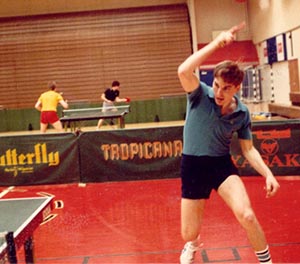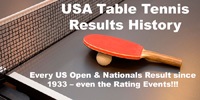Tip of the Week
Christmas Sabbatical
As noted last week, I'll be away for Christmas, so my next blog entry will be right after Christmas. Then I'll return to blogging every morning, Mon-Fri.
USA Nationals
I had a great time last week at the USA Nationals in Virginia Beach. Here are the results. (Make sure to set the tournament field to "2011 US Nationals.") Ty Hoff and I won Hardbat Doubles (my 12th time at the Nationals or Open, eight of them with Ty, the other four with Steve Berger). However, I was mostly there to coach. Below are a number of segments about the Nationals.
USA Cadet Trials
Tong Tong started out poorly, losing numerous close games and matches the first three days, Tues-Thur, Dec. 13-15. However, the BIG event for him was the Cadet Trials, which were on days four and five. Last year he had gone in seeded #9 in the ratings, but made the team (top four) by pulling off four upsets to grab the fourth spot. This year he went in seeded #10 in the ratings, but made the team (finishing third) by pulling off five consecutive upsets! So he made the team two straight years by pulling off nine upsets without losing to anyone below him - not bad. If he had lost any of those nine matches or to anyone below him, he wouldn't have made the team that year. He's the only one to make the team both years. Key to his turnabout in the Trials - stronger mental focus and more two-winged attack. (He'd been playing too much forehand.) We also came very prepared tactically.


 Photo by Donna Sakai
Photo by Donna Sakai


